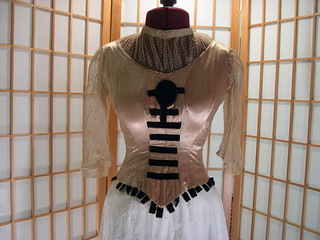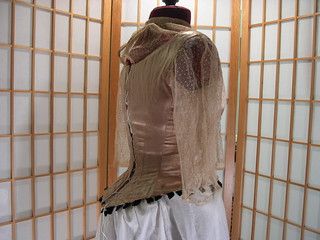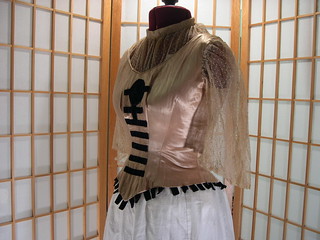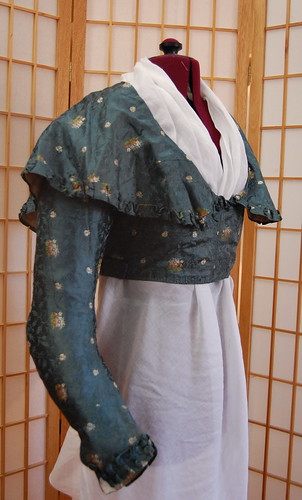
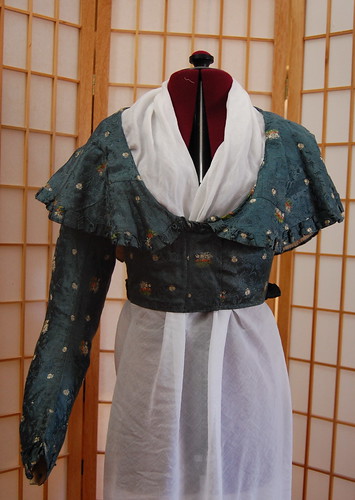

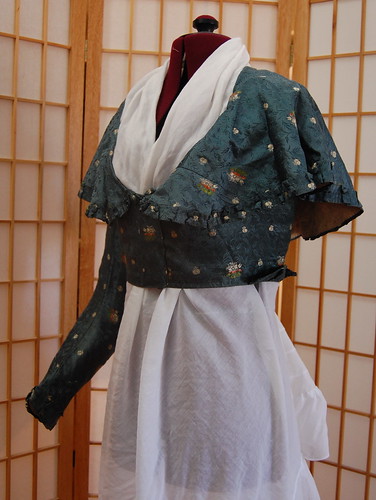
The end of the 18th century brought about dramatic changes in fashion. Dresses evolved from the structured dresses of earlier in the century, to the high-waisted, delicate dresses of the early 19th century. The 1790s were a transitional decade where dresses often blended details of the past with what was to come. One of the most striking differences was the waistline, which crept up as the decade progressed. In the early part of the decade, many dresses, such as the bodice in my collection, retained the straight front and structured lines of earlier dresses.
I have a fascination with 18th century construction techniques. They’re so different than today’s, and really quite practical. They create strong seams and a neat interior, yet are not difficult to take apart in case the dress needs to be remodeled. This bodice showcases a variety of different techniques, as each seam and edge is finished differently.
This article originally appeared on Your Wardrobe Unlock'd. It has been updated with new information about the side back seam technique.

